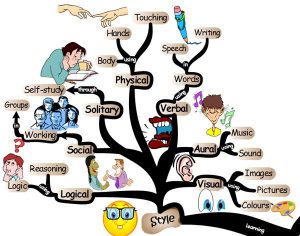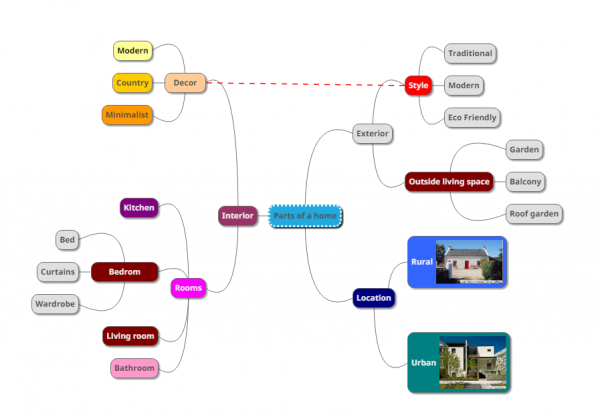Mind maps are useful tools to enhance your learning and creativity. Let’s start by answering two questions:
- What are mind-maps? and
- How can mind-maps be useful for organizing and reflecting upon your language acquisition process?
- A mind map is a diagram that connects information around a central theme. At the centre is your main idea, with branches showing the subtopics or related ideas (see Fig.1 below). This technique maps out your thoughts using keywords that trigger associations in the brain enhancing the creation of further ideas.

Fig. 1 Mind Map - Mind maps are very useful for organizing and reflecting upon your language acquisition process as they help you create a working plan, setting goals (short and long term goals), centralizing the different stages of your learning, and creating new ideas. Mind maps also work as knowledge banks since they allow you to add links and attach files.
Benefits of mind-mapping:
- Helps you to:
- see the bigger picture.
- see detailed information.
- remember complex information.
- remember related chunks of information.
- cope with, and manage periods of information overload.
- Improves your imagination.
- Helps make learning fun.
- Clarifies your goals.
- Clarifies your plans of action.
- Triggers your creative associations.
Mind maps can help you reflect upon your language acquisition process in a creative and critical way.
Upon completion of this task you will be able to:
- Organise information in your target language.
- Design a working plan for your learning goals.
Technology required
- Any mobile device (smartphone, tablet computer) and/or laptop computer, desktop.
- Internet connection is required.
Material and links
- Mindmeister (simple mapping tool, text content only)
- Simplemind (allows you to create text content and add media such as videos, can be used across devices)
-
MindMup 2 (allows you to attach documents, videos, and images, can be shared for collaboration using a link, or to posted to social media)
Procedure
- Open one of the above tools and/or download the related app.
- Click on the icon indicating “Create new mind map”, you may receive prompts to help you.
- Create a central idea or theme (this may be your target language)
- Add branches stemming from your central theme to represent sub-themes or related ideas (these may include the language skills: writing, listening, speaking, and reading)
- Add keywords to the sub-themes.
- Colour code your branches and add images and videos (if possible) to help you remember the sub-themes or strands.
Note: Practice creating a simple mind map, using vocabulary in your target language, for example, types of homes.


